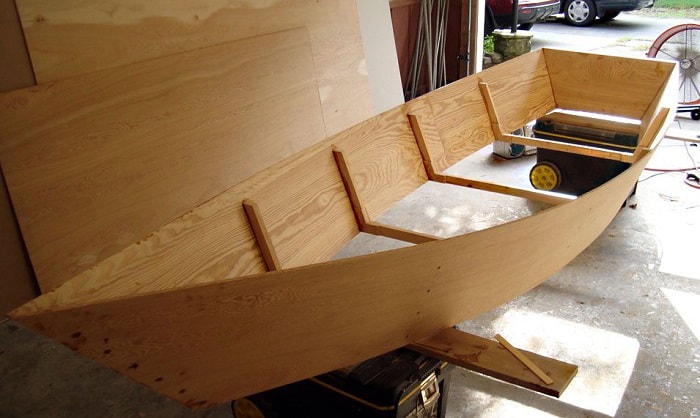
Beyond the Blueprint: Uncharted Waters in Plywood Boat Design
Building a boat from plywood is a rewarding challenge, blending craftsmanship with engineering. While many resources focus on the technical aspects of plan creation, "Creating Plywood Boat Plans for Smooth Sailing" (let's call it CPBPS) â€" a hypothetical book for the purpose of this review â€" could benefit from exploring less-trodden paths. This review delves into those unexplored territories, posing crucial questions and offering novel perspectives for both seasoned builders and enthusiastic beginners.
The Unsung Heroes of Plywood Selection: Beyond the Species
Most plans focus on wood species, but what about the often-overlooked grade and manufacturing process? This is where CPBPS could truly innovate.
Q: How can the book incorporate a deeper understanding of plywood grades beyond the basic A-B-C designations?
A: Instead of simply stating "use marine-grade plywood," CPBPS could delve into the nuances. For instance, a detailed discussion of the differences between various manufacturing methods (e.g., exterior-grade with phenolic resin vs. standard exterior-grade) and how these affect longevity and cost-effectiveness would be invaluable. Real-world examples of projects using different grades and the resulting performance could enhance understanding. A section on sourcing responsibly harvested plywood would also resonate with environmentally conscious builders.
Q: Can we move beyond the typical mahogany or okume recommendations?
A: Absolutely! CPBPS should explore alternative, potentially more sustainable and readily available plywood species. Research on the properties of lesser-known species suitable for boatbuildingâ€" their strength-to-weight ratios, resistance to rot and warping, and availability in different regionsâ€" could be a significant contribution. This would allow builders in diverse locations to utilize local resources, reducing environmental impact and transportation costs.
Designing for the Unexpected: Incorporating Resilience and Adaptability
No matter how meticulously crafted, boats encounter harsh conditions. CPBPS needs to address the unexpected.
Q: How can the book incorporate design elements that anticipate damage and facilitate repairs?
A: Instead of just presenting idealized plans, CPBPS could include sections on designing for resilience. This might involve suggesting modular designs where damaged sections can be easily replaced. Illustrations showcasing techniques like using easily replaceable bulkheads or incorporating sacrificial layers could prove invaluable. Case studies of boats that have weathered storms and the repairs undertaken, highlighting successful design choices, would be highly beneficial.
Beyond the Boat: The Extended Ecosystem of Plywood Boatbuilding
The building process itself is rarely discussed comprehensively. CPBPS should address this.
Q: How can CPBPS incorporate a holistic approach, considering the entire lifecycle of the boat?
A: The book could include sections on sustainable practices throughout the building process. This encompasses sourcing materials responsibly, minimizing waste generation during construction, and detailing environmentally friendly finishing techniques. Furthermore, it could offer guidance on boat maintenance and responsible disposal or recycling at the end of its life. This holistic approach resonates with the growing interest in sustainable living and responsible resource management.
Q: Can we talk about the social aspect of boatbuilding?
A: CPBPS could include stories of collaborative boatbuilding projects, highlighting the community aspect. This not only enhances the learning experience but also fosters a sense of belonging and shared achievement. Interviews with experienced builders sharing their insights and tips could be woven throughout the book, making it more engaging and relatable.
In conclusion, while the technical aspects of plywood boat plan creation are crucial, CPBPS can truly distinguish itself by venturing beyond the conventional. By embracing innovative approaches to plywood selection, incorporating resilience into the designs, and considering the wider ecological and social implications, this hypothetical book could serve as an invaluable resource for aspiring and experienced boatbuilders alike. It is this expanded perspective, focusing on the rarely discussed nuances, that would propel CPBPS to become a truly indispensable guide.

0 comments:
Post a Comment
Note: Only a member of this blog may post a comment.